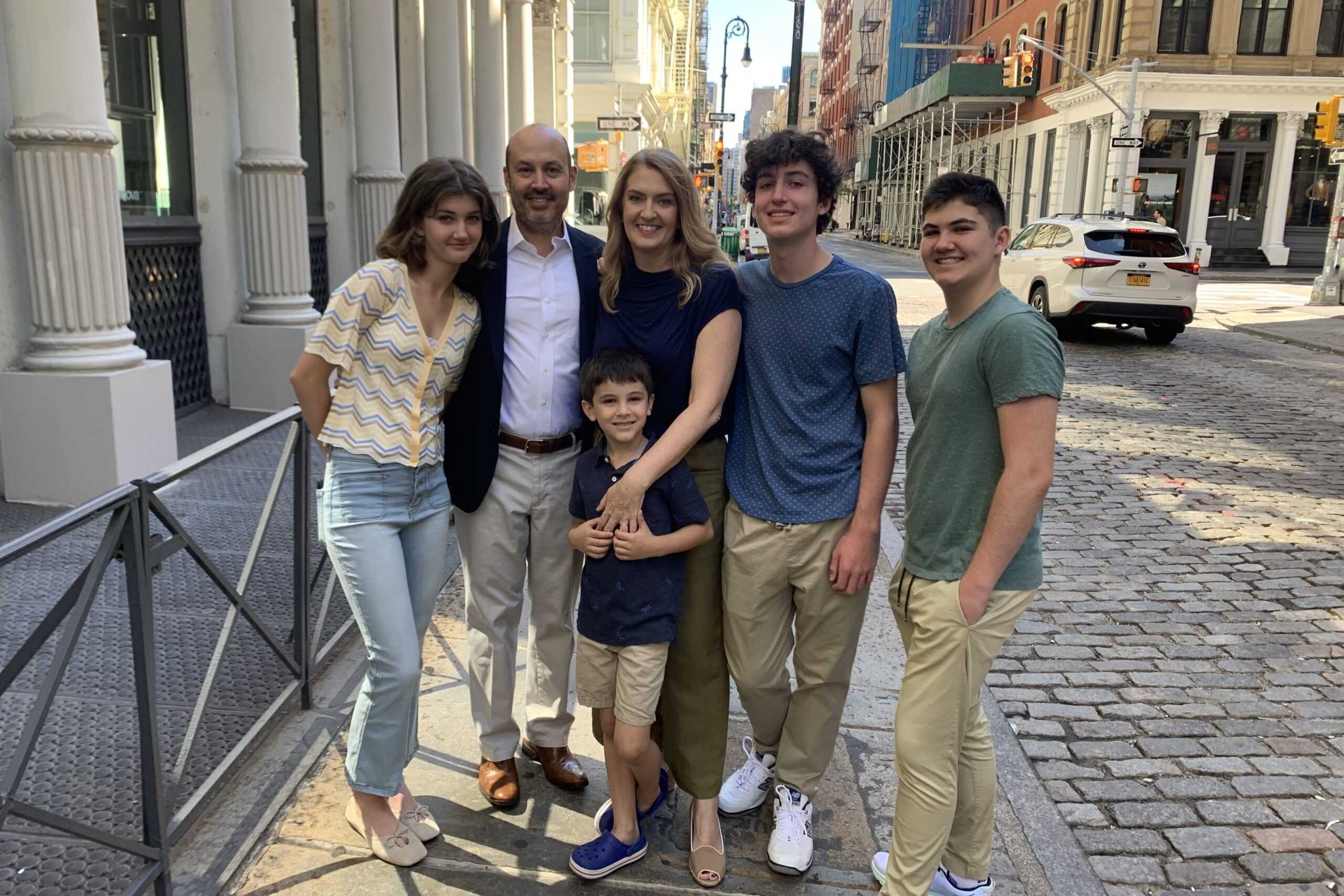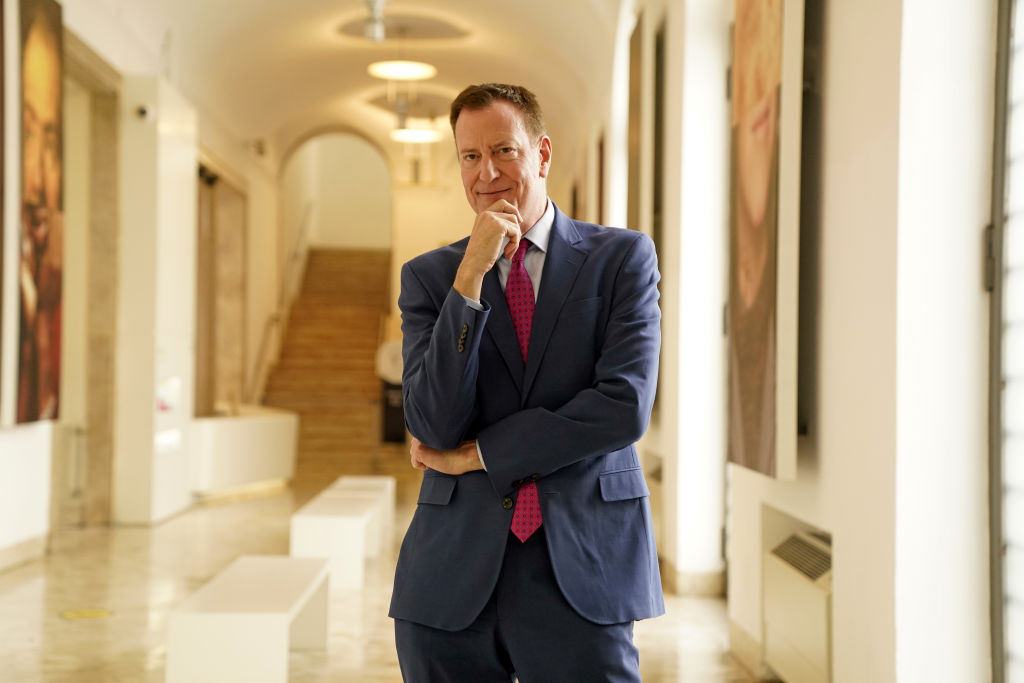The 20th-century French writer Albert Camus remains a living author, a permanent contemporary, in a way that the far more dogmatic and ideological Jean-Paul Sartre does not. The latter provided a caricature of “existentialism,” nihilism dressed up as absolute freedom, beholden to no limits and no enduring truths. In contrast, the author of The Stranger and The Plague rejected Sartre’s facile nihilism, as well as his repellant accommodation with murderous messianism, typically conveyed in fashionable leftist nostrums. The more hopeful side of Camus comes through in his recently re-released Travels in the Americas: Notes and Impressions of a New World.
An entry from his travel notebook from his four-month long trip to New York, the east coast of the US and parts of Canada in the spring and summer of 1946, reveals just how distant Camus had grown from the “official philosophy” of Saint-Germain-des-Près. Indeed, Camus had come to reject completely the cult of ideological revolution inspired by a “messianism” that is indistinguishable from “fanaticism.” This unbeliever, however, refused to reject the sacred tout court. He found himself increasingly attracted to a Greek thinking that was not essentially historical and that affirmed values that “are preexistent.” He forthrightly declared himself “against modern existentialism,” as well as opposed to messianic, totalitarian socialism.
By then, Camus was well on his way to the recovery of moderation grounded in an appreciation of limits and the firmest rejection of the ideological justification of murder. This recovery would find its finest expression in his 1951 book, L’homme révolté (or The Rebel in English). In the two interview-portraits appended to the volume, one from the New Yorker and the other from the New York Post, Camus expressed his displeasure at being assimilated to the camp of existentialism. He was not content with pessimism as the final word, opting instead for hope grounded in dialogue and respect for human dignity. He freely invoked Plato’s Socrates in that regard in some of his major writings from this period.
As the noted Camus scholar Alice Kaplan writes in her lucid introduction to the volume, Camus’ “philosophizing” forms only a backdrop, even if an essential one, to these travel notebooks. This is above all “observational writing,” an artful account of choses vues (things seen). In them, we discover the man, as much or more than the thinker – at once curious, excited, witty, ironic and, often, weary. He is always coming down with, or recovering from, flu and fever, with a regularity that is alarming. Although he never acknowledges it even to himself, at least in writing, Camus was dealing with the residues of tuberculosis. This makes the spirit that shines through even more remarkable, and the illness and exhaustion more understandable.
The second of the two travel notebooks to the Americas in this volume provides a record of Camus’ two-month trip, by ship, from Marseilles to Dakar, then on to Brazil, Argentina, Uruguay and Chile, in the summer of 1949. We witness Camus suffering from more serious bouts of illness, fatigue at seeing the “human face” too many times in a concentrated period of time, and from an occasionally deep melancholy whose source is never acknowledged by the author. We learn, however, from Kaplan that in 1948 Camus reignited his love affair with the Spanish actress Maria Casarès after a three-year interruption (this despite the fact that the French writer was married and the father of young twin sons). Camus remained lovestruck until his death in a car crash in 1960, causing no small amount of misery for all involved. This otherwise thoroughly decent man largely exempted affairs of the heart from supervision by his rigorous standards of moral responsibility. In South America in 1949, he “suffers from feelings of isolation and melancholy,” as Kaplan puts it, as a result of his separation from Casarès, and the considerable delays in his mail from her catching up with him.
As the notebooks richly illustrate, Camus was a master of observation. Even on the ship from Le Havre to New York, Camus describes the varied characters and personalities he meets in a frank, enjoyable, but never biting way. Things are very tight on the SS Oregon, but Camus does not unduly complain. His descriptions of the sea – at times calm, also rough, and more often beautiful – reveal an artist’s power of description and a philosophical poet’s meditations on the natural order of things. Nature remains a powerful standard of judgment for Camus, as well as a source of solace, and a powerful reminder of constancy and change. As Kaplan points out, when the city is “crass,” when people are “indigestible,” Camus turns his contemplative gaze to the sea. He revealingly writes: “I’ve always been able to make peace with things out at sea, and for a moment the infinite solitude does me good, though I can’t help but feel all the world’s tears are rolling atop the sea now.” Torn between commitment and contemplation, the Algerian-born Camus remained a quintessential child of the Mediterranean.
Camus shared some of the prejudices of the French intellectual class, including, arguably, an excessive dislike for the bourgeois, the mercantile, the industrial and the utilitarian. He is at first overwhelmed by the vulgarity of New York, and the inhuman character of its skyscrapers. (He wittily observes that, thankfully, human beings do not always look up.) But the city grows on him. He admires its energy, and the gregariousness and generosity of Americans. He makes many friends in the publishing and intellectual worlds, including a crucial one with his longtime publisher, Blanche Knopf. He enjoyed going to a lively bar in the down-and-out Bowery with his friends, and taking strolls with French and American friends alike. He was fully aware of America’s “race problem” but avoided constant moralizing about it. He took to the passion and energy of black music.
His talk at Columbia University, “The Crisis of Man,” read in French, drew an oversized crowd. It brilliantly sketched his ongoing efforts to move beyond political and philosophical pessimism and negation. Thus, while remaining eminently French-Algerian and European in character and outlook, Camus avoided anything that smacked of fashionable “anti-Americanism.” His moderate and humane libertarian socialism was largely devoid of utopian illusions, and he never gave way to inhuman abstractions. And with the one significant exception, he practiced what he preached.
Camus was even more famous by the time he travelled to South America in 1949. The Brazil he describes is a half-Western country, racially divided, and with “a framework of modernity” barely covering its searing passions and ideological tensions. Camus meets brilliant and talented poets, strange intellectuals, beautiful and boorish society ladies, and sees the full array of semi-pagan “Black Catholicism” on display. He visits a favela in Rio de Janeiro and is struck by the good will of its inhabitants, as well as their poverty. He witnesses macumbas and hours-long dances where the participants are seemingly possessed. He is exhausted by meeting after meeting and dinner after dinner. He is charmed to find an Afro-Brazilian theater group putting on a version of his play Caligula in a samba hall, but surprised to see this satire of Hitlerite despotism turned into a “sensual, flirtatious dance,” as Alice Kaplan puts it. In the Brazil of 1949, “Hitler is a distant reference.”
Camus’ visit to Argentina becomes an “unofficial” one to protest a ban on the performance by an Argentinian troupe of one of his plays. During his four-day visit to Chile, its alluring cities and towns crowded between the Andes and the sea, Camus witnesses public unrest over an increase in subway fares (a perennial occurrence in that country) and the outlawing of the Communist party (fully Stalinist at the time, one might add). An exhausted Camus flies back to Paris this time in what he tellingly describes as “a metal box.”
In Latin America, Camus delivered his powerful text “The Time of Murderers,” published in French that year and a portent of what is to come in L’homme révolté. I recommend that American readers of this fine, inviting book follow up by reading “The Crisis of Man” (1946) and “Time of the Murderers” (1949) in Albert Camus, Speaking Out: Lectures and Speeches, 1937-1958 (Vintage, 2021). There one finds Camus at his wisest, most dignified, and humane, a permanent contemporary.


























Leave a Reply